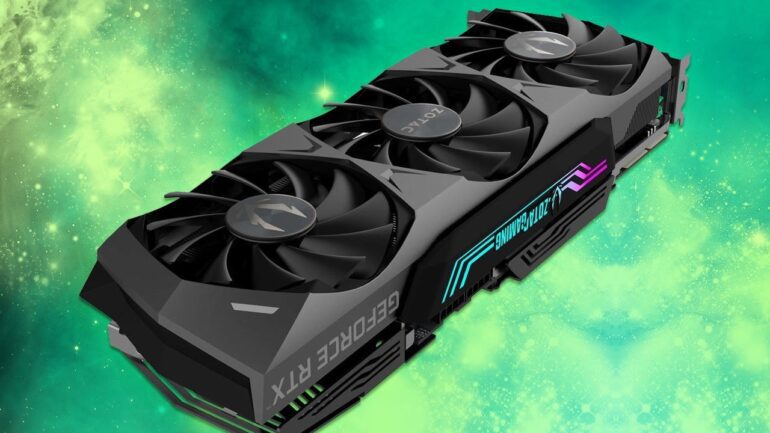TL;DR:
- Nvidia reshapes RTX GPUs for AI applications on desktops, expanding beyond gaming and graphics.
- New RTX GPUs based on Ada Lovelace architecture for AI inferencing and training.
- Enthusiasts using gaming laptop GPUs for AI tasks; Nvidia introduces desktop and workstation designs with RTX GPUs.
- Leading computer makers to launch workstations housing up to four RTX 6000 GPUs.
- Nvidia’s L40S Ada GPU was introduced as an affordable alternative for AI training and inference.
- L40S offers improved performance with faster clock speeds and enhanced rendering capabilities.
- Nvidia’s RTX systems target metaverse and AI markets, bundled with Omniverse and AI Enterprise software.
- L40S GPU supply is expected to be more stable compared to previous high-end GPUs.
- Low-end RTX 4000 and RTX 4500 GPUs to become available at varying price points.
- Nvidia’s strategy aims to democratize GPUs for personalized programs and wider accessibility.
Main AI News:
As the pressure within the GPU realm intensifies, Nvidia takes an innovative stance by redefining the role of its RTX GPUs, traditionally renowned for their gaming and graphics prowess. These GPUs are undergoing a strategic reconfiguration and repackaging, now catering to enthusiasts with a keen interest in deploying AI capabilities on desktop systems. Representing a pivotal shift, these novel GPUs align with Nvidia’s overarching vision of ensuring widespread accessibility to GPUs precisely when and where their customers require them.
Unveiling the RTX GPUs, Nvidia positions them as potent tools for both AI inferencing and training tasks. Distinguished by their foundation on the Ada Lovelace architecture, these GPUs stand apart from the dominant Hopper architecture, which fuels the high-demand H100 GPUs.
Already, enthusiasts are harnessing the computational might of GPUs found in gaming laptops to propel AI-powered applications, spanning from text-to-text transformations to intricate text-to-image model operations. Capitalizing on this momentum, Nvidia used the platform of the SIGGRAPH conference to announce a fresh wave of desktop and workstation configurations, all propelled by the underlying power of the RTX GPUs.
Leading computer manufacturers, including industry stalwarts like Dell, Lenovo, and Boxx are poised to unveil state-of-the-art workstations, elegantly housing up to four RTX 6000 GPUs within a single chassis. While Nvidia’s suggested retail price for this GPU iteration stands at $6,000, it’s noteworthy that vendors like Dell have positioned it at a premium exceeding $9,000, inclusive of taxes.
Each RTX 6000 GPU, intricately shaped by the Ada Lovelace design, boasts an impressive 48GB of GDDR6 memory and is fortified with a 200Gbps network-interface card. This computational powerhouse consumes 300 watts of power, seamlessly interfacing with the time-tested PCIe 4.0 interconnect standard.
In an endeavor to diversify its offerings, Nvidia further revealed the L40S Ada GPU, a compelling contender akin to a more accessible version of the illustrious H100. Positioned as a swifter alternative to the preceding A100 GPUs in the realm of AI training and inference, this innovation is essentially a modified iteration of the L40 server GPU, initially introduced a year ago.
Mirroring the performance metrics of its peers, the L40S is also endowed with 48GB GDDR6 memory, strategically positioned to empower systems drawing inspiration from the OVX reference server design, primarily tailored for metaverse applications.
Delving into the performance metrics, the L40S confidently surpasses its predecessor, the A40 GPU, exhibiting up to fourfold augmentation in AI and graphics workloads. With a foundation rooted in the preceding Ampere architecture, this GPU variant amplifies AI training speeds by 1.7 times and inference speeds by 1.5 times, courtesy of elevated clock speeds and optimized tensor and graphics rendering capacities.
Nvidia’s strategic direction with the RTX systems is undoubtedly aimed at the burgeoning landscapes of the metaverse and AI markets. This progressive move is complemented by the inclusion of licenses for the coveted Omniverse and AI Enterprise software suites. Additionally, Nvidia proudly unveils AI Enterprise 4.0, a comprehensive iteration encompassing the groundbreaking Nemo large-language model.
Anticipating a seamless supply chain, the L40S GPU units are poised to commence shipments later this year, signaling a departure from the supply constraints that have occasionally plagued the upper echelons of Nvidia’s GPU lineup. Bob Pette, Vice President for Pro Visualization at Nvidia, underlines this change, affirming, “These will not be as constrained as we’ve been in some of our highest-end GPUs.”
As the horizon expands, Nvidia’s vision trickles down to even its low-end offerings. The RTX 4000 GPU, catering to the entry-level segment, will grace the market in September, sporting a price tag of $1,250. Subsequently, the RTX 4500 is scheduled for availability starting in October, with a retail price of $2,250.
Elevating AI to an echelon as vital as gaming, Nvidia is resolute in its mission to democratize GPUs, fostering an environment where enthusiasts can shape their own programs and execute them wherever computational muscle is most accessible. The storied H100 GPUs, once confined to the realm of gaming, have now emerged as strategic assets for various companies. This transformation is exemplified by the likes of CoreWeave, a pioneering startup that has ingeniously deployed its Nvidia GPUs as collateral to fuel its ambitious growth trajectory. Additionally, the burgeoning realm of cryptocurrency mining has led to the repurposing of GPUs within data centers to spearhead AI-driven operations.
Conclusion:
Nvidia’s strategic evolution of RTX GPUs to cater to AI applications alongside gaming marks a pivotal moment in the industry. This transformation aligns with the increasing demand for AI capabilities, underscoring Nvidia’s commitment to democratizing computational power and enhancing accessibility. The introduction of more affordable GPU options and the expansion into metaverse markets further solidify Nvidia’s position as a key player shaping the future of computing.

